The Hammer
Simon de Pury on How He Keeps His Finger on the Pulse of a Rapidly Transforming Art Industry
Hint: it involves Roblox.
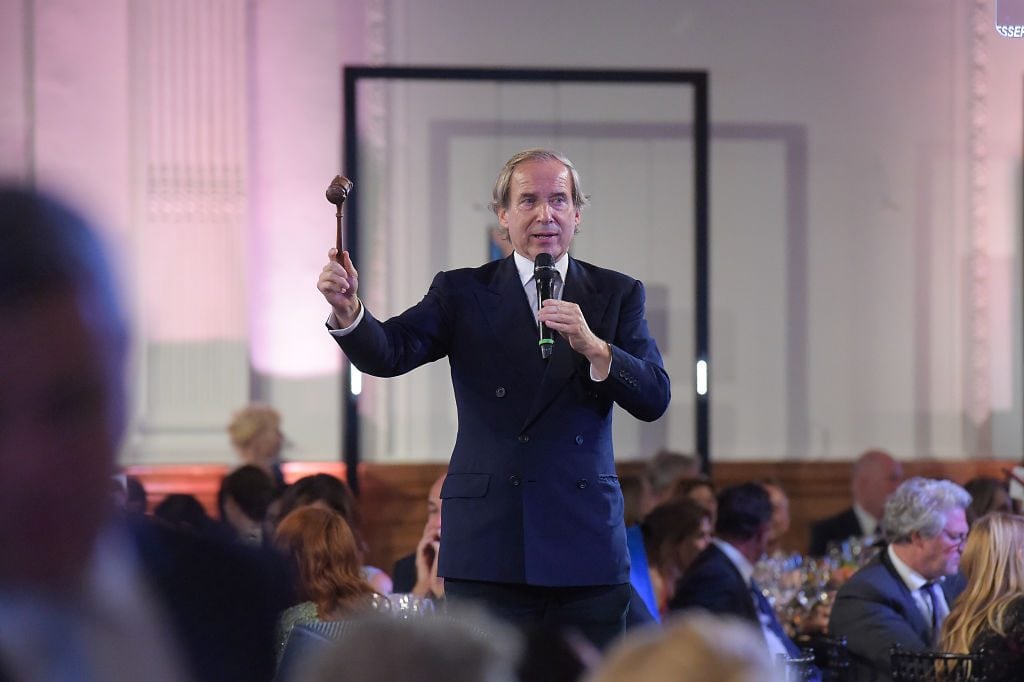
Hint: it involves Roblox.

Simon de Pury

Every month in The Hammer, art-industry veteran Simon de Pury lifts the curtain on his life as the ultimate art-world insider, his brushes with celebrity, and his invaluable insight into the inner workings of the art market.
One reason I am convinced that NFTs and digital art in general are here to stay is that the TikTok generation is spending the majority of its time glued to cell phones and iPads. Preteens and teenagers—including my own daughter—follow their favorite social media platform or play games such as Roblox around the clock. Their limited financial resources, coming out of their pocket money, are being used to acquire clothes or accessories for their digital avatars. They fantasize about their dream houses in the metaverse, and most of their visual stimulation comes from digital trickery on their screens.
Beeple and Yam Karkai are some of the artists they look up to, and CryptoPunks are the kind of pieces they aspire to own. Once these kids hit their 20s and beyond, and as their financial possibilities gradually increase, their aesthetic choices will be guided by what excited them during their adolescence.
I was a teenager during the 1960s. It is nearly impossible today to imagine the excitement that was caused when acquiring a then very expensive new vinyl L.P. by the Beatles, the Rolling Stones or Bob Dylan. I have never ceased to follow music since then, nor I have ever stopped following art since a school friend told me about Andy Warhol, Roy Lichtenstein, and Robert Rauschenberg.
On the too rare occasions I still meet some of my high school mates, I am struck by how their tastes basically haven’t moved beyond the giants who emerged during our formative youth. In some ways, for them music ended with Jimmy Hendrix and art with Jasper Johns. It has only been downhill ever since.
The same phenomenon applies to friends who were adolescents in subsequent decades. When Michael Jackson and Prince were reigning supreme in the pop firmament, Jean-Michel Basquiat and Keith Haring were the gods in the world of visual arts. When each generation reaches financial independence and maturity, the art market reflects a considerable growth for the artists that generation admired most when it started discovering art.
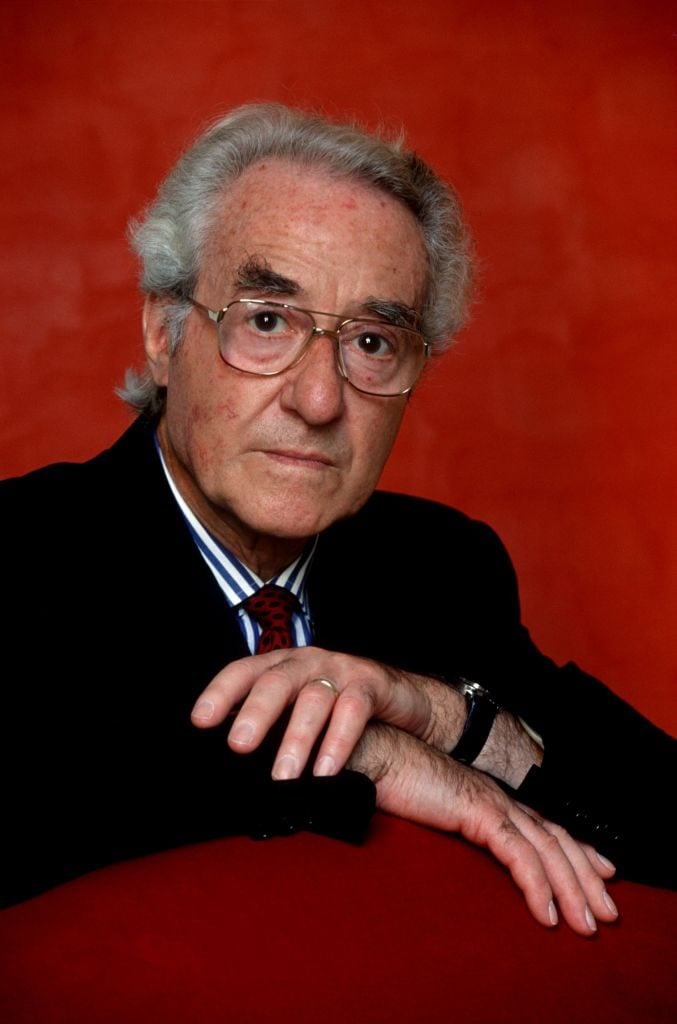
Giuseppe Panza di Biumo. Photo by Pool GAILLARDE/MARCHETTI/Gamma-Rapho via Getty Images.
Most great collectors of contemporary art are particularly adept at picking the best works made by artists of their own generation. That skill may still be there for choosing works by artists from the next generation, but very often it is gone by the time collectors try to acquire works by the generation after that.
Count Giuseppe Panza di Biumo was one of the collectors I most admired. He boldly acquired works by some of the key artists of his generation such as Mark Rothko, Franz Kline, Robert Rauschenberg, or Roy Lichtenstein. He then sold and donated a substantial part of this first collection to MOCA in LA, where it became the backbone of that institution.
He subsequently built another outstanding collection of younger artists such as Dan Flavin, Donald Judd, Robert Ryman, Bruce Nauman, Brice Marden, and Richard Serra. The first time I ever came across works by towering figures such as James Turrell was at Count Panza’s gorgeous villa in Varese, which is still accessible to the public today. The bulk of the second Panza di Biumo Collection was acquired by the Guggenheim thanks to its visionary director Thomas Krens.
Count Panza had clearly demonstrated twice already his Midas touch. The expectations therefore were high when he exhibited his third collection, consisting of even younger artists. To my knowledge, not a single artist of that phase of his collecting has “made it” since, and most of them vanished without a trace.
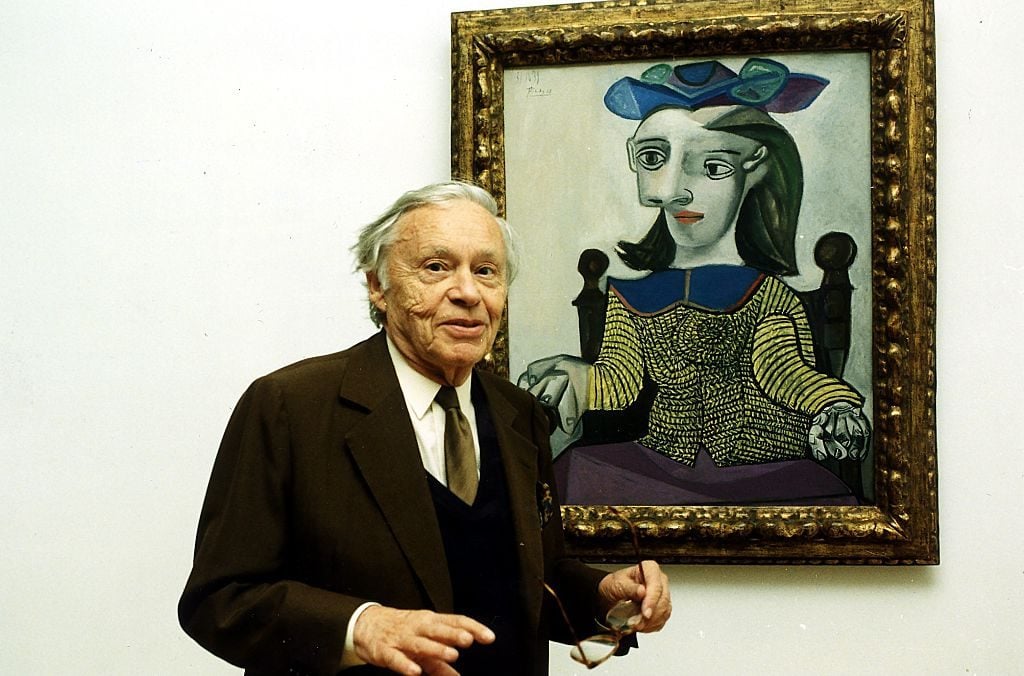
Heinz Berggruen in 1996. Photo by Will/ullstein bild via Getty Images.
This same phenomenon could be observed with important art dealers. Heinz Berggruen, whose Foundation in Berlin with its masterworks by Pablo Picasso, Georges Braque, Paul Klee, and Alberto Giacometti is an absolute must-visit, was while still very active in his 80s and 90s not at all interested in acquiring works by much younger artists. He left that to some of his children, notably his son Nicholas whose collecting area starts where his father’s ceased.
Ernst Beyeler, possibly the greatest dealer of his time, whose Fondation Beyeler in Basel became Switzerland’s most vibrant cultural institution, was not particularly interested in the youngest art. The same applies to another top dealer, Jan Krugier, based in Geneva, with the one notable exception that at the end of his life he realized how important Jean-Michel Basquiat was and began to acquire some important works by him. He was late in entering the game for Basquiat but still way ahead of most.
One of the reasons why many collectors and art market professionals don’t “get it” anymore, as they get on in life, is that too much knowledge and experience actually stands in the way. Curiosity is the fuel of the engine. You can’t let go and decide to take a six month or one year break. In the same way that I listen every Friday on Spotify to new music being released in all categories such as rock, pop, hip-hop, R&B but also dance and electronic, Latin, indie, jazz, party, classical, world and movie soundtracks, you have to follow all art fairs, biennials, exhibitions in public institutions, commercial galleries, studio visits, retrospectives, publications, websites, Instagram, TikTok, and so on. It’s this constant pursuit that helps you keep your finger on the pulse.
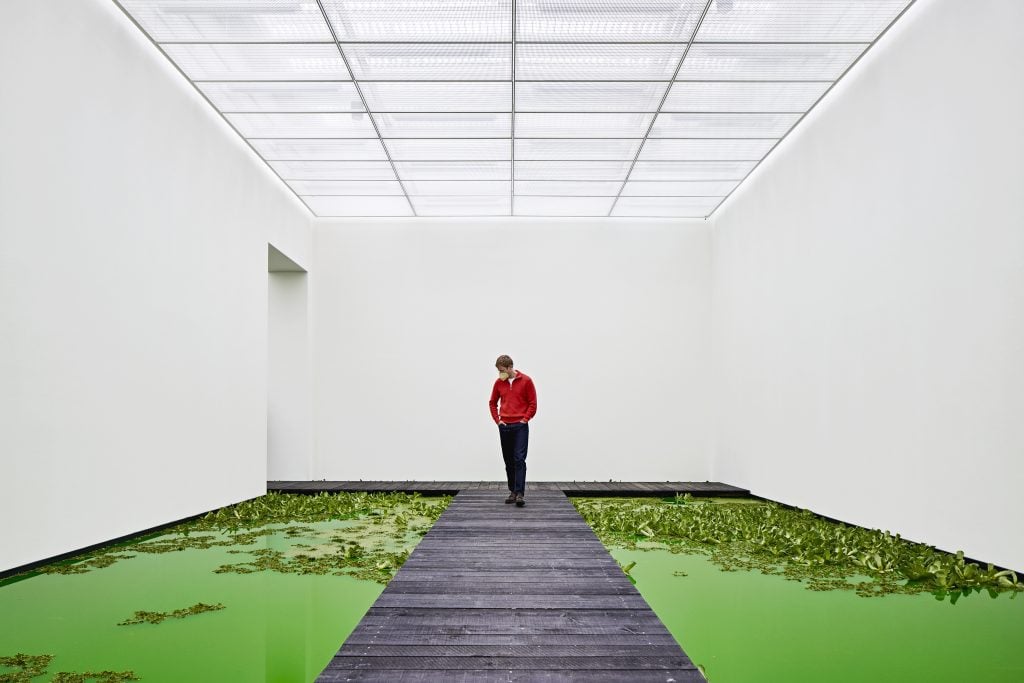
Olafur Eliasson, Life (2021). Installation view: Fondation Beyeler, Tiehen/Basel, (2021). Courtesy of the artist; neugerriemschneider, Berlin; Tanya Bonakdar Gallery, New York / Los Angeles. © 2021 Olafur Eliasson. Photo: Mark Niedermann.
One of the first potential consignors I dealt with in my early days at Sotheby’s was Swiss art historian Professor Max Huggler who taught at the University of Bern. As an academic, he had only modest financial means but his passion for art and his ability to spot talent early had allowed him as a young man to acquire works by Pablo Picasso, Ernst Ludwig Kirchner, Paul Klee, and Joan Miró. He was well into his 80s when he showed me a lovely watercolor by Klee, which he wanted to sell in order to be able to acquire a work by Joseph Beuys. I was incredibly impressed by this, as in those days Beuys was highly controversial, and a number of collectors and the art establishment of the time were up in arms saying that “this couldn’t possibly be art.”
A driving factor in the evolution of taste is simply time. In the same way that people don’t listen to a lot of pop music from before their youth, they don’t collect a lot of art from before that time. With the passing of each decade, the starting point moves up one notch. That explains the subsequent waves of interest for art of the 1950s, 60s, 70s, 80s etc. In the same way that music never stops, art never stops. It is for that reason that nothing can possibly be more interesting than art being done right now. Rock and roll, hip-hop and painting have been declared dead many times. For being deceased, they are all doing remarkably well!
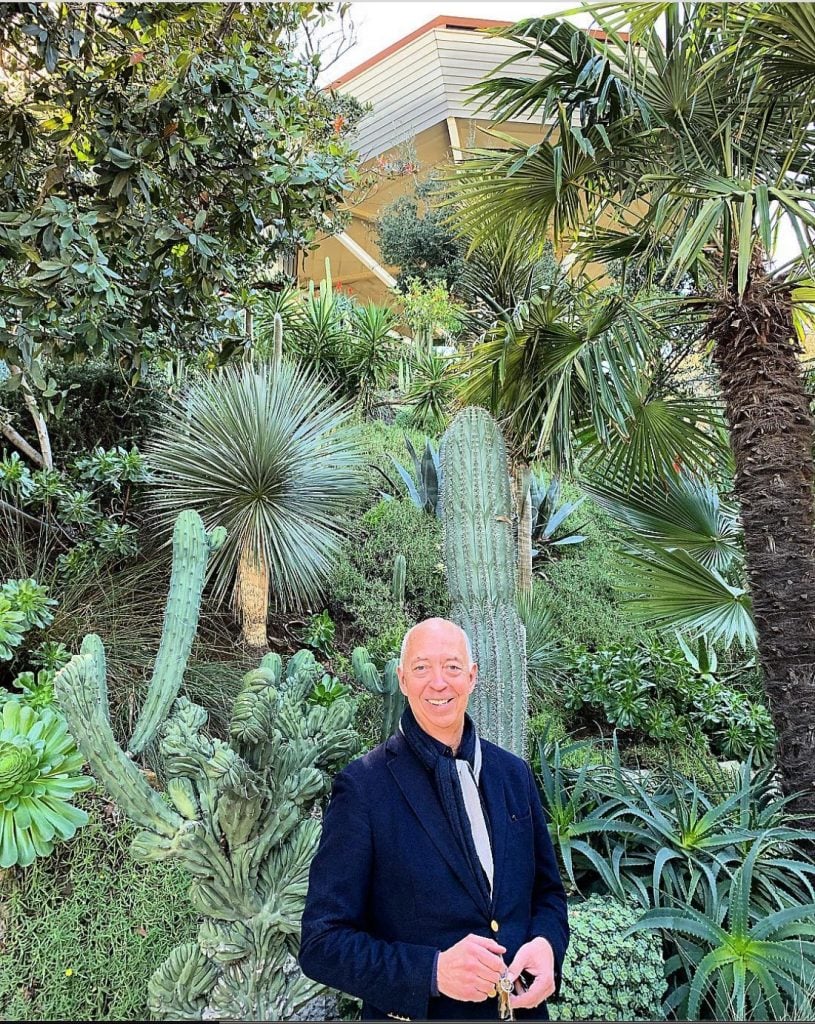
Benedikt Taschen under the Chemosphere House built by John Lautner. Photo by Simon de Pury.
Besides the inexorable passing of time, tastemakers play a big role in shaping the evolution of taste. The main tastemakers in the art world are from outside of the art market. Charles Saatchi is the king of them all. “Sensation,” the sensational exhibition of his collection at the Royal Academy of Art in London and subsequently at the Brooklyn Museum of Art was at the origin of the tidal wave which brought the YBAs including Damien Hirst, Tracey Emin and Chris Ofili to the attention of the public at large.
Benedikt Taschen, who revolutionized the market for art books, is another major tastemaker. The market track records of artists such as Jeff Koons, Christopher Wool, Martin Kippenberger and Albert Oehlen can partly be credited to him.
Peter Brant is one tastemaker whose choices today are just as relevant as they were when he started collecting in the 1970s. His outstanding program of exhibitions at the Brant Foundation are hugely influential.
In the more recent past, Choi Seung-hyun—known as T.O.P. the K-Pop star with his 13.2 million followers on Instagram—has been a big influencer. A large part of his posts are devoted to mostly western contemporary artists.
Yusaku Maezawa, the Japanese internet entrepreneur who recently flew to space holds a similar position of influence. He obtained instant fame when he acquired a seminal Basquiat for $110 million at Sotheby’s. His endorsements of young artists cause instant traction for these not just on social media but on the market.
Keeping a close eye on the ticking generational clock as well as the moves of key influencers is a good starting point to predict the future evolution of taste.
Simon de Pury is the former chairman and chief auctioneer of Phillips de Pury & Company, former chairman Europe and chief auctioneer of Sotheby’s, and former curator of the Thyssen-Bornemisza Collection. He is now an auctioneer, curator, private dealer, art advisor, photographer and DJ. Instagram: @simondepury